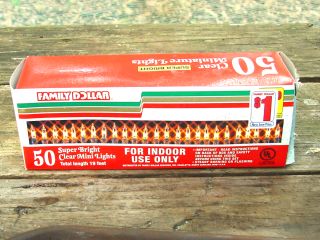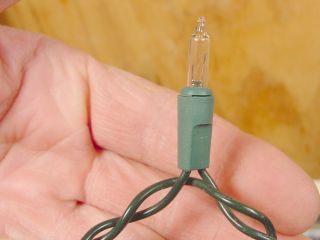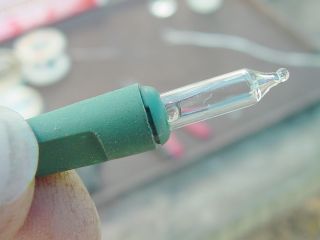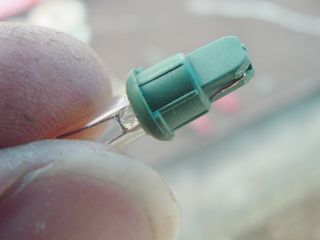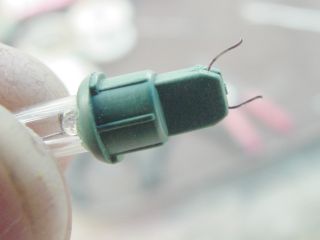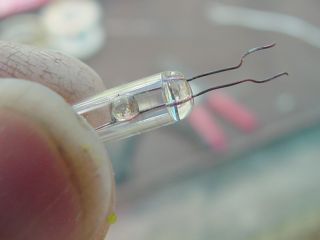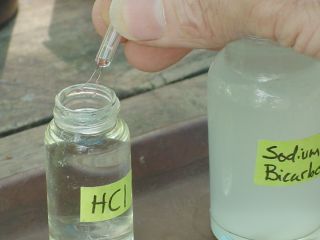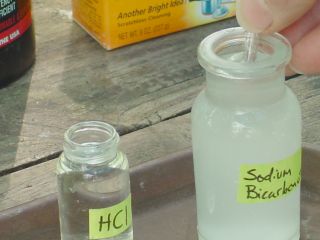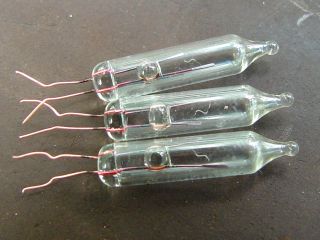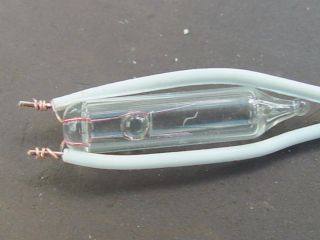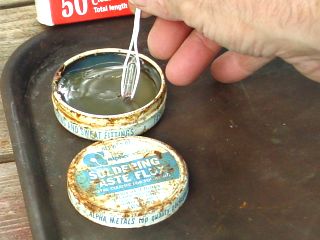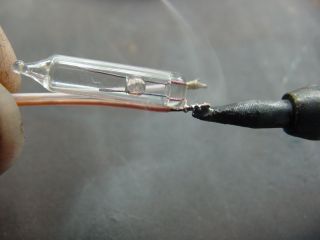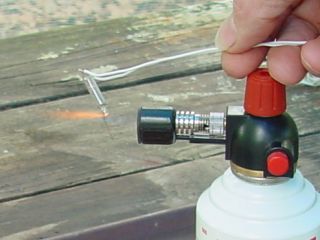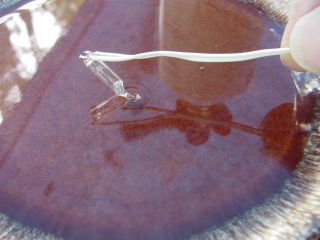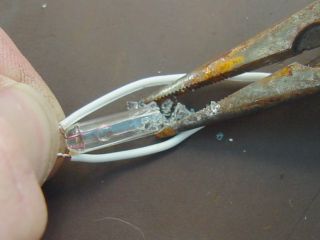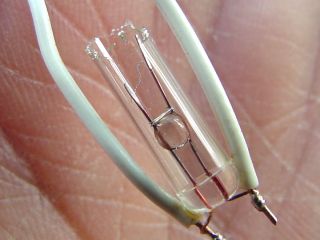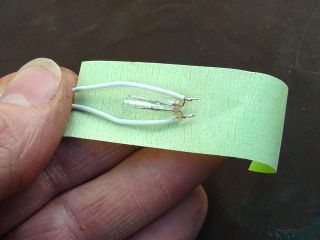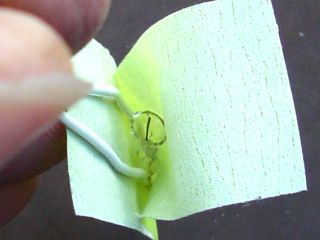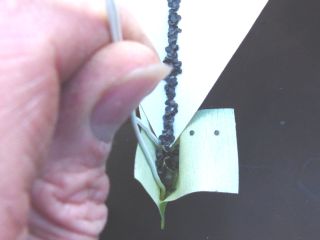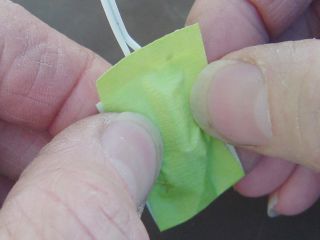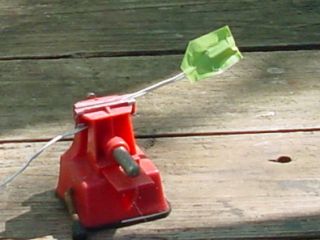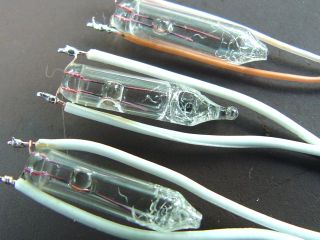
|
Here are our three bulbs. They have all fallen
for the latest craze. Click on the picture to bring up a larger version,
and notice the one in the middle. This is the one I overheated - see
the melted spot just before the tip? That's a problem, because when
it hits the water, it doesn't just craze, it fractures and draws up water.
See the meniscus of water just to the left of the melt-hole? Note
the water at the internal blob-of-glass insulator?
All is not lost. Just break the wet bulb open and let it dry. Or
if you are in a hurry, heat it until the water boils off.
The other two don't have any water, despite having lost their tips. They
were properly heated, and barely dipped.
But do check them all for water intrusion because that little bit of water
could render the pyrogen non-flammable.
|
